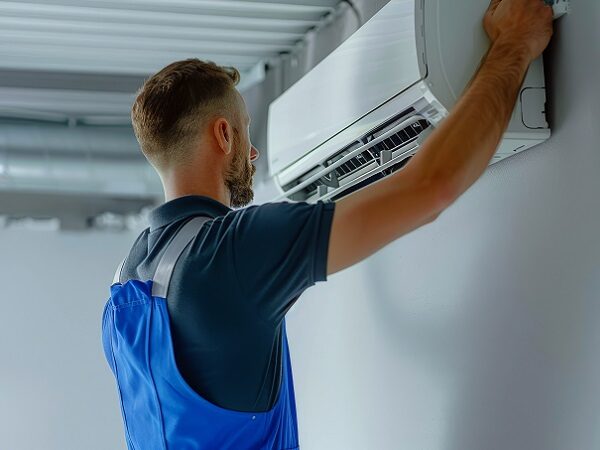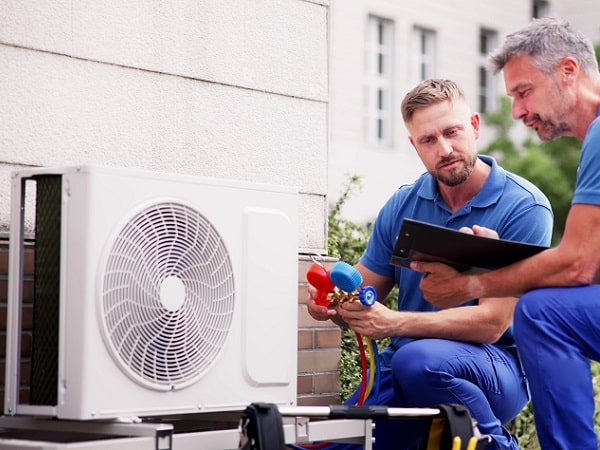The Ultimate Guide to Ventilation Systems
Ventilation systems can provide a comfortable environment for homes and businesses, while reducing bacteria and allergens.
There are several types of ventilation systems to suit each premises and they have low to little maintenance.
You must consider the advantages and disadvantages of ventilation systems for your home or business before choosing the type of system to suit you.
What is a ventilation system?
A ventilation system provides fresh air indoors by bringing outdoor air inside and distributing it.
It may also remove bacteria and pollutants, depending on the type of ventilation system.
Is a ventilation system different from air conditioning?
Air conditioning cools the air inside, but it does not use an external source to do this. Ventilation brings air from outside, in and can pre-heat the air, so it is not cold.
What is the purpose of a ventilation system?
By providing fresh air to the inside of buildings, it ensures there is sufficient levels of oxygen and keeps the air healthier by removing bacteria and allergens. It circulates fresh air while keeping the temperature at a comfortable level.
Why are ventilation systems important?
Ventilation systems provide better air quality to indoors by bringing fresh air in and reducing bacteria and pollutants.
There can be decreased performance in offices with a higher carbon dioxide level due to unhealthy air. Decreased productivity can cost businesses £77 billion a year.
Bacteria can lead to infections which are responsible for a high percentage of sickness absence, losing an average of 30.4 days of productivity.
A ventilation system can help to reduce these issues.
If you would like more information on ventilation system installation in Manchester & Cheshire, please contact us today.
Types of ventilation systems
There are four types of ventilation systems.
- Exhaust ventilation systems
- Supply ventilation systems
- Balanced ventilation systems
- Heat-recovery ventilation systems.
Exhaust ventilation systems
An exhaust system extracts indoor air from the building while make-up air enters it through vents.
The system usually comprises of one fan connected to ducts and to a single exhaust point.
An exhaust ventilation system is simple and inexpensive to install but is only suitable for cold climates otherwise it may bring in moisture with the air which can lead to damp issues.
Supply Ventilation Systems
A supply system is better at controlling the air that enters the premises than an exhaust ventilation system as it filters it.
It has one fan that pushes the outside air into the building while air flows out through ducts and vents.
It is helpful for removing pollutants from the air before circulating because of the filter which can create healthier air and possibly reduce the spread of bacteria.
The supply ventilation system is more suited to warmer climates.
Balanced ventilation systems
This system is called a balanced system because it creates an equal amount of outside air and inside air.
It is more expensive as it has two fans and two duct systems, however, it is more efficient at removing moisture and pollutants.
A balanced ventilation system is suitable for all climates.
Heat-recovery ventilation systems
This system moves changes indoor air with outdoor air which requires a supply and return duct for each room.
These are the most expensive ventilation system and may cost more in electric. It takes a specialised HVAC company to install these, such as Atmostherm.
Pros and cons of ventilation systems
Ventilation systems create a comfortable environment, particularly in workplaces. This in turn can make staff more productive and reduce costs for employers.
Some ventilation systems can reduce bacteria by filtering the outside air which can lead to lower sickness absences in workplaces. They can also pre-heat air to keep the temperature level.
Ventilation systems do not require maintenance except they may need to be cleaned twice a year at most and serviced once a year.
They can also decrease costs through heat recovery; however, they can be expensive to install and may cause higher heating costs.
The aesthetic of ventilation systems can be bulky and unpleasing to the eye.
Do ventilation systems prevent Covid-19?
Ventilation can prevent Covid as it brings outside air in to circulate. As Covid is passed by aerosol transmission, this can help reduce the risk of spreading it.
What is the cost of ventilation systems?
For domestic properties, the cost of installation can range from £2,000-£4,000 and for a commercial premises it ranges from £7,000-£12,000.
The cost will depend on varied factors including the size of the premises and the type of system.
Do you need to clean ventilation systems?
Your ventilation system will need to be cleaned but generally these systems are free of maintenance.
It can be difficult to clean your ventilation system yourself, so you will likely need a professional to do this for you.
How often your ventilation system needs to be cleaned will depend on the type of premises, the type of system, and other factors.
A heat-recovery system may need cleaned twice a year, but some systems may only need cleaned every year or two.
Ventilation system regulations and requirements
Employers have to comply with UK legislation like the Health and Safety Guidance (HSG258) and the British Occupational Hygiene Society (BOHS).
They must also follow the Workplace Regulations Act 1992 which makes ventilation a legal requirement.
Employers are also responsible for ensuring their ventilation systems are regularly inspected and operational.
Businesses should also try to improve natural ventilation as well as installing a mechanical ventilation system.
Do you need to have your ventilation system serviced?
It is best to have your system serviced once a year to ensure it is working to the best of its ability.
Getting your system serviced helps to maintain your system, so it will last longer. It may help to prevent breakdowns, unexpected bills, and an unpleasant environment in your home or at work.
Who can install ventilation systems?
When installing a ventilation system, you should ensure the company are specialists in ventilation system and have sufficient experience.
Specialists are needed as they will ensure it is installed properly, making it unlikely to have any issues and they also have knowledge of all the latest regulations.
It is also best to get a ventilation system specialist who is an approved installer of the particular brand of system you are installing such as Powrmatic, Winterwarm, or AmbiRad.
A specialist company, such as Atmostherm, will oversee the whole process from design, installation, to fitting, and repairs.
If you would like more information on ventilation systems, please contact us today.
Speak to a HVAC expert today
Enter your details below to get a call back from one of our HVAC experts.



